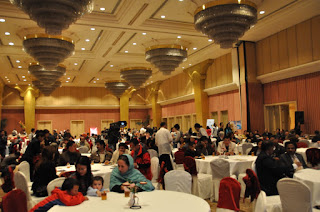High Speed Trafficking
 |
| Photo from Kathmandu Post |
A day after police rescued a Nepali woman from employment fraud and drug trafficking at the Tribhuvan International Airport, Aika (name changed) faced me hysterically. Her hopes of living the good life were still there, she said, but she had now become more realistic. She needs to go back to where she can get protection and security; back to her family and loved ones.
I cannot imagine how she must have felt. Her body was black and blue when she was brought to MAITI Nepal, an NGO that provides counseling, shelter and employment to women rescued from trafficking; her mental state was greatly disturbed, and her face wandered afar without any inkling of what was happening to her. From what I saw, I can only testify to one thing—that the discoloration on her body could have only come from savage beatings.
Just weeks ago before she left for Dhaka, Aika was full of dreams about the future. She sent me a private message on Facebook saying that she would meet me when I arrived in Nepal, and that she had recently found a job in Bangladesh that guaranteed her a secure path in her chosen career. She felt a twinge of uncertainty knowing that she would soon be separated from her family in Kathmandu, but she just shrugged it off, believing that she was entrusting her fate to divine providence.
Aika told me that the three weeks she was detained upon her arrival in Dhaka were the worst she had ever experienced. She was locked in a room for days, beaten and sprayed with cannabis derivatives. Her harrowing nightmare flared like a meteor for weeks and the faces of people who abused her disappeared from her memory just as fast. She could not remember most of their names as a result of the drug abuse.
Aika’s fate is comparable to the 10,000 Nepali girls and women who are trafficked every year to neighbouring countries such as India and Bangladesh. Reports claim that they are forced into prostitution and burned with cigarettes until they learn how to service up to twenty-five clients a day. Some girls even go through ‘training’ before being initiated into prostitution, which can include constant exposure to pornographic films, tutorials on how to ‘please’ customers and consequently subject to repeated rapes.
Aika looks me straight in the eye with a conviction that most of sex trafficking and drug dealing transactions in Bangladesh involved police protection, with tolas of gold coming in and out. If this is true, then it is a crime of epic proportions.
This is the war the Nepal government has been fighting. The 1,850km of open, porous border between Nepal and India, and the Siliguri Corridor connecting to Bangladesh, make trafficking difficult to stop. Most victims are lured with promises of better jobs in countries such as India, Dubai or Saudi Arabia. Other tactics include false marriages and proposals, where criminals approach indebted families to trade their daughters to pay their debts, sometimes under the guise of a dowry for a marriage.
But this problem goes further. Women trafficking nowadays have transcended physical borders. The crime has conquered a new space: cyberspace. In this modern, technology-driven world, the war on women trafficking has shifted from personal encounters to bits and bytes, from face-to-face engagements to
virtual chats.
Aika was a victim of job fraud and drug trafficking through a social network that a majority of us use—Facebook. She was promised a job by a person who claimed to be acquainted with her family and friends. Her constant online conversations with the cyber trafficker allowed that person to access her personal background and her desperate need to apply for a job to sustain her family’s needs. She felt a “social connection” and believed that the cyber trafficker could lift her from the gut-wrenching poverty.
Indeed cyberspace has opened up new ways of commodifying women and sexualising violence. As Aika said, the methods of control used by her cyber traffickers are similar to those used by batterers: women are denied freedom of movement; locked in a room for weeks, isolated, deprived of earnings, threatened, and made dependent on drugs or alcohol. Physical and sexual violence are central to these traffickers’ maintenance of control.
The anonymity of cyberspace has allowed cyber trafficker to breed exploitation and violence with impunity, especially in countries with weak cyber policies. According to the 1986 Human Trafficking Prevention and Control Act of Nepal, anyone convicted of selling humans is subject to 10 to 20 years in prison. In 2011, the 11th Annual Trafficking in Persons Report released by the US State Department said that Nepal has not fully complied with minimum standards for the elimination of trafficking. The report cited the lack of proactive victim identification despite the establishment of a special unit at the Crime Investigation Bureau to investigate trafficking.
With trafficking gaining speed in the world of cyberspace, how do we fortify our sentinels? With little fear of detection, apprehension or punishment, cyber traffickers can now buy, sell, auction, degrade, humiliate, torture, stalk, view, consume and dispose of women, wherever they are in the world. This experience teaches us to brace our guard every time we start communicating with remote persons in front of our blinking screens.
Aika escaped and lived to tell her story. As she stays alive, her struggle has not ended. Cooped up in a cybercafé somewhere is the next victim. We know this will happen. But like Aika, will she survive?
This article was posted in The Kathmandu Post OPED section on April 25, 2013.
http://www.ekantipur.com/the-kathmandu-post/2013/04/24/oped/high-speed-t...


Comments
Post a Comment